- Home
- Diane Fanning
Under Cover of the Night Page 3
Under Cover of the Night Read online
Page 3
No matter how hard they searched, investigators could not find any additional fragments. But two rounds had been fired from that gun. They went down to the basement and examined every inch of the ceiling beneath the living room to see if the other one had been shot through the floor. They found nothing—the second fired bullet remained a mystery.
• • •
Before five that afternoon, the investigators were back at the county courthouse with Assistant Commonwealth’s Attorney Wes Nance, awaiting the arrival of Wesley Earnest and his attorney, Joey Sanzone. It was after six before they saw Wesley pull up in a pickup truck. Mayhew snapped a photo of the truck just in case they needed it in the future.
At six feet four inches with a trim frame, the dark-haired thirty-seven-year-old Wesley was a gangly man with a disarming, slightly goofy smile. He towered over his shorter, rounder attorney. When they were seated, Babb told him again about Jocelyn’s death and asked, “Had you heard about that before receiving my call yesterday?”
“Yes. I arrived at Shameka’s between six thirty and seven last night,” Wesley said, referring to his girlfriend Shameka Wright, “and Shameka’s mom asked, ‘Didn’t you used to live on Pine Bluff?’ I told her ‘yes’ and she said there was a story on the news about some woman dying there.”
Maybe that accounts for his lack of curiosity, Babb thought, or maybe not. He explained to Wesley that in a “normal death investigation” they had to establish the whereabouts of the people connected to the victim in the window of time around the time that Jocelyn died.
Wes gave minute details about everything he’d done on Tuesday.
“What did you do on Wednesday?” Babb asked.
“I went to work at the school. There was a fight there that day. I was tired and didn’t feel well after that. I went home and went to bed.”
“You didn’t go anywhere that night?” Babb continued.
“No.”
“You didn’t talk to anyone?”
“No.”
Despite his vague recollection of Wednesday’s events, when Babb asked about Thursday and Friday, Wesley was again very thorough in his descriptions of his actions and activities.
Babb moved on to asking about Wesley’s estranged wife. “What was Jocelyn like?”
“She was the greatest woman—a great person, a great athlete. I broke her heart. I hurt her,” Wesley said.
Everything Wesley was saying seemed to be in accord with the comments of her friends regarding her personality, her collegiate basketball career, and her black belt in karate, but Babb wondered about what Wesley wasn’t saying. “What did you think of Jocelyn?”
“She was wonderful.”
“If she was so wonderful, why did you go out with others?”
“Jocelyn was okay with that. She told me to sleep with other women.”
Babb knew that directly contradicted what he’d heard from Jocelyn’s friends who’d cited his infidelity as what ended the marriage. “Really? I thought you were getting a divorce.”
“My brother was the catalyst for that. He caused a big confrontation at the house and I left. He’s a very controlling guy. You know, when we separated, it broke Jocelyn’s heart. She stopped eating and lost forty pounds. I was just doing my thing,” Wesley said with a shrug. “She was very depressed but I didn’t do anything about it.”
Babb made a mental note to find out everything he could about Wesley’s brother, Jocelyn’s attitude toward infidelity and any possible dark moods she may have experienced. He said, “My only problem is this: she seems like a real strong person to do what she did with basketball and karate and that image clashes with her being depressed,” Babb said.
Most disturbing of all to the investigators was Wesley expressing the belief that Jocelyn had committed suicide. Of all the friends and family members interviewed so far, he was the only person who thought it was possible that she had taken her own life.
Wesley switched subjects. He mentioned one of Jocelyn’s co-workers, a man he said he suspected she’d had something going with, since they spent so much time together doing projects.
Wesley admitted that he’d purchased a .357 Magnum in the past but added, “It was a present for my wife, for her protection.”
A .357 Magnum was the weapon that they’d found at the scene, the one that in all likelihood took Jocelyn’s life. Babb now thought it was in all probability also the same weapon Wesley claimed to have purchased for Jocelyn.
Consulting with Sanzone, Wesley agreed to provide a DNA sample and fingerprints. He would not, however, agree to a polygraph test.
“What kind of vehicles do you have? I know you have a truck,” Babb said, referring to the one that Wesley just drove to the meeting.
“That’s not my truck. I just borrowed that truck,” Wesley answered.
The investigators exchanged a glance. They’d both noticed that Wesley appeared a bit rattled when they asked him about the vehicle. There had to be a reason for that, and they were determined to find it.
FOUR
Saturday, December 22, 2007, detectives questioned Marcy Shepherd and Maysa Munsey separately and found consistency in both women’s versions of the events of Thursday morning. Both women insisted that they had not moved Jocelyn Earnest’s body.
The investigators were troubled, though, about Marcy’s admission that she’d been out to the house the night before. “If you were here last night, why did you come back today?”
“Because, Jocelyn was afraid of Wesley. She just installed a security system because she was afraid of him. If she thought Wesley was outside, she would go into the bathroom, lock the door, and stand frozen in the tub. She said he was still coming into her home and that she was afraid he would kill her. And I think he did.”
Detectives wondered if Marcy really believed that or if she was trying to divert attention from herself. Even more red flags were raised in their minds when they asked Marcy if she knew the identity of the “new love” referenced in the note they found near the victim’s body.
She looked down at her feet and didn’t speak for a moment. When she did, she said, “That was me. I loved Jocelyn Earnest.”
When pushed for further details, Marcy explained. “We started working together in August 2005 and developed a friendship. I started feeling something more and I asked her if she felt the same way and she said, ‘No.’ So, I said, ‘Okay. We’ll just be friends.’”
“But then it changed?”
“Yes, it became a romantic relationship.”
“Were you and Jocelyn intimate?”
“No. We had feelings for one another but we did not have a sexual relationship.”
“No physical intimacy?”
“After the company Christmas party the first year we worked together, I went to her home. We kissed on the sofa. But both of us were married at the time so we didn’t pursue it any further.” Marcy explained that as of April 2006, she and her husband had legally separated, although they continued to live in the same house in order to care for their young children without disruption. Returning to her relationship with Jocelyn, Marcy added, “We did develop a strong emotional attachment.”
“Was that the only time you two got physical?”
“There were a couple of times after that that Jocelyn kissed me—nothing more than that.”
The detectives exchanged a glance. Unrequited love or unsatisfied lust could be motive for murder, but it was generally a more personal homicide than a single shot to the head.
The relationship between the two women, however, could also be a motive for Jocelyn’s estranged spouse to have taken her life.
When Marcy told the investigators about the text messages she’d exchanged with Jocelyn on the last day of her life, the detectives wanted her BlackBerry. Marcy didn’t want to part with it. “I am afraid of Wesley Earnest,” she told them. “Joc
elyn said that if he knew anything or found out anything, he would kill us both. He could be lurking anywhere. I am afraid to be without my phone.”
Was it a reasonable explanation? A diversionary move? Or was Marcy simply buying time because she had something to hide?
• • •
That same day, the medical examiner confirmed that Jocelyn had died from a gunshot wound to the head. Although it would be weeks before investigators received the final autopsy report, Dr. Amy Tharp did give them her preliminary findings that indicated it was not suicide and the death was instantaneous. Still, Tharp hesitated to officially define Jocelyn’s death as a homicide until receiving the toxicology and other test results.
While the detectives waited for evidence reports from the forensic lab to confirm their suspicions of murder, they reviewed the seventeen spiral notebooks filled with Jocelyn’s handwriting—some found in her home, others discovered when they executed a search warrant on her office at Genworth. Page after page, Jocelyn exposed her deepest thoughts, worries, and joys. The investigators tried to maintain a professional distance, but they felt themselves drawn closer to the deceased woman. It felt as if she were talking to them, explaining her life in intimate detail. They kept reading, hoping they’d find the key to unlock the reason for her death.
And then they did. One entry made in August 2005 jumped off the page. Jocelyn wrote of her growing fear of Wesley and urged her family to suspect “my cheating husband” if she were ever found dead. “Know that he killed me, because I would never kill myself. My guess is he shot me and then killed himself.” In another entry, she wrote: “If I die, Wesley killed me and he probably shot me.” It was a chillingly prophetic pronouncement about the means of death, but would it prove to be as accurate about the person who pulled the trigger?
Another observation became apparent as they read through the journals. The style and wording found in these notebooks was not consistent with what they’d seen in the note found on the living room floor. Did that point to a different author? Or was it simply because she was more depressed and stressed in the moments before she took her life?
Of particular interest to the detectives was another document they discovered, a timeline of the last eleven years of Jocelyn’s life, composed on oversized paper. All of the events listed were handwritten and in first person. Oddly, though, there were two distinct handwriting styles, indicating that the entries were authored by more than one person. Those entries were bracketed in red, and notably, all were statements that reflected positively on Wesley Earnest.
Some comments in this unfamiliar hand offered an excuse for any possible infidelity on his part. For instance, one entry in 1996 read: “Kept telling Wes to sleep with someone else and come home to me.” A year later: “Kept telling Wes, I don’t want to be with you sexually.”
Other entries praised Wesley. In 1998: “It’s okay. Wes took care of me as always.” Three years later: “Very understanding husband with me spending late hours at work.”
Still other notes in the unknown handwriting placed the blame for difficulties in the marriage squarely on Jocelyn’s shoulders. In 2005: “Wes kept trying to talk to me, but I just kept shutting him out,” followed in the next year by: “Wes wants another chance to make it work out but finds it highly unlikely because my family has too much influence and never fully embraced Wes and Wes’s mother has been left out of the loop.”
Who wrote those entries? It certainly didn’t appear to be Jocelyn. Could it have been Wesley Earnest? If so, when did he alter that document? Long ago, to aid him in contentious divorce proceedings? Or in the aftermath of murder, to diminish suspicion on the estranged spouse? As in many investigations, every new tidbit of uncovered information generated a roar of unanswered questions.
FIVE
Suspicions against Marcy Shepherd were now a distant second to those pointing to Wesley Earnest. However, Investigators Gary Babb and Mike Mayhew guarded against tunnel vision. They needed more before they settled on any firm conclusions of guilt. The Bedford County Sheriff’s Office brought in backup to help make that happen. Personnel from the police departments in the city of Bedford, the seat of the county where Jocelyn died; Lynchburg, the city where Jocelyn worked; and the Campbell County Sheriff’s Office, the neighboring area where Wesley stayed when visiting his girlfriend, now became part of the team of investigators.
• • •
While the detectives sought answers, Jocelyn Earnest’s family, friends, and neighbors sought healing. Lisa Jennings, a former neighbor, was stunned by news of Jocelyn’s death. She remembered the Earnests as an athletic, outgoing, and smart couple. “They were nice people as far as we knew,” she said to a reporter for the Virginian-Pilot.
Next-door neighbor Ernest Daye started double-checking the locks on his windows and doors each night. “It’s worrisome,” he told Lynchburg’s News & Advance. “We haven’t heard anything. She was my neighbor. I used to see her and wave and speak to her. That’s all I know—nothing, to tell the truth.”
“It’s always been a quiet and peaceful neighborhood,” Dorothy Slusher said to the News & Advance reporter. “It makes you wonder what happened to her. It’s so sad. I keep my doors locked day and night. You just don’t know. People are crazy.”
• • •
The first step on the path back to normalcy for those who knew and cared about Jocelyn was the funeral service.
Initially, Wesley’s family said that they wanted her body. Wesley even went to the funeral home insisting that since Jocelyn was his wife, it was his decision. He told them, “I want her cremated in a cardboard box and put in a simple urn.”
Since Jocelyn’s family wanted to lay her to rest in West Virginia, where they lived and Jocelyn grew up, they enlisted Mayhew’s help. In a dispute like this one, he was powerless, but he did make sure nothing was done until a legal decision was reached. He contacted Joey Sanzone and told him that he needed to file the proper paperwork. With the attorney involved, the conflict simply went away. Jocelyn’s body was transported to her home state of West Virginia to the Brown Funeral Home in Martinsburg. The family received friends there from 7 to 9 P.M. on December 27, 2007. Services began at 10 A.M. on December 28 with Reverend Ed Taylor officiating. It was a low-key event, made even more mournful because no one knew if the deceased had taken her own life or had been the victim of a violent act. Both possibilities were tragic and painful, but the not-knowing haunted the solemn occasion.
Jocelyn’s mother, Joyce Young, was visibly shaken by the experience. While Jocelyn’s home was still sealed as a crime scene, Joyce had pleaded with investigators to have something that smelled like her daughter. They’d taken pity on her and had allowed the grieving mother inside—in the presence of law enforcement and Wesley’s defense attorney Joey Sanzone—to take possession of a pillow from Jocelyn’s bed.
“To go to a funeral, to pick out your child’s casket, it just tears you apart,” Joyce said.
Jocelyn was interred in nearby Rosedale Cemetery. The obituary notice noted: “In addition to or in lieu of flowers, memorial contributions may be made to the Berkeley County Humane Society.”
Her father, Bill Branham, took home her beloved Labrador retriever, Rufus. Homes for her cats were found with feline-loving friends.
• • •
On January 16, 2008, questions about Jocelyn’s death still hung in the air. Marcy Shepherd, Maysa Munsey, and another friend from work, Dora Farrah, arranged a local memorial service at Timberlake United Methodist Church in Lynchburg. Four hundred people, including some from West Virginia, gathered beneath a sky that threatened snow and entered the sanctuary to express their admiration for their deceased friend.
Co-workers described Jocelyn as a leader who could facilitate the input of others and make decisions on large projects. Friends referred to her special ability to recognize when things were wrong and do something about it. “She didn
’t wait for that phone call for help. She just offered it. She was my best friend, closer than a sister,” Maysa said. When Marcy stood before the gathered mourners to speak of Jocelyn, she said, “She was like a fine wine with a complex bouquet. If I asked everyone in the church what their relationship with Jocelyn was, they’d all have different answers. Yet, she was always herself.”
They cried, said good-bye, expressed their love, and waited for more information. Many were already convinced that Jocelyn had not taken her own life and were impatient for authorities to make it official.
SIX
Detectives continued to dig for the solid facts they needed to draw a conclusion, even as more circumstantial evidence piled up that Jocelyn Earnest’s death was a homicide. For instance, although there were two printers in the home, neither one was operational at the time of her death, and no draft of the suicide note was found on her computer. And their suspicions about Wesley Earnest were reinforced when they learned that the gun that killed her was registered in his name.
They finally had the proof they needed to call Jocelyn’s death a murder when blood stain analysis confirmed that her body had been dragged at least two feet after the instantly fatal gunshot.
In the Department of Forensic Science lab in Roanoke, latent print specialist Kenneth Riding sought evidence on several items. He found no fingerprints of value on the shell casing or on the Smith and Wesson .357.
Then he turned to the note found at the crime scene. There were no visible prints on it, but once he processed it with ninhydrin, a chemical that reacts to the amino acids given off by the fingers, he found two latents—both from the same digit, either the tip of a finger or thumb—one on the front and one on the back of the paper. Using the samples he had retrieved from the morgue, Riding confirmed that the prints did not match those of Jocelyn Earnest. He then compared them to those obtained from Maysa Munsey, Marcy Shepherd, and Dora Farrah—none were a match. However, the latent on the back of the note had ten points of similarity and the one on the front of the note bore fifteen points of similarity to one set of known samples—those belonging to Jocelyn’s estranged husband, Wesley Earnest. Although there is no established minimum for identification, experts consider that number of matches to be sufficient for identification purposes.

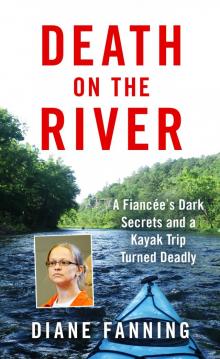 Death on the River
Death on the River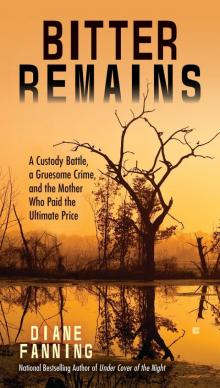 Bitter Remains
Bitter Remains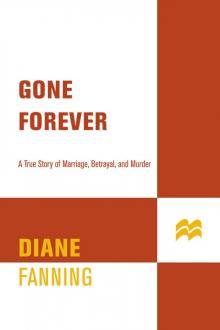 Gone Forever
Gone Forever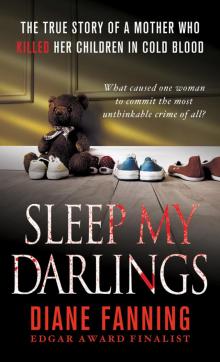 Sleep My Darlings
Sleep My Darlings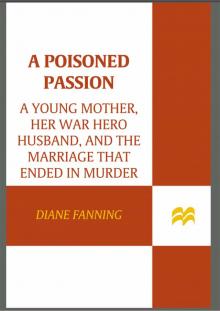 A Poisoned Passion
A Poisoned Passion Through the Window: The Terrifying True Story of Cross-Country Killer Tommy Lynn Sells (St. Martin's True Crime Library)
Through the Window: The Terrifying True Story of Cross-Country Killer Tommy Lynn Sells (St. Martin's True Crime Library)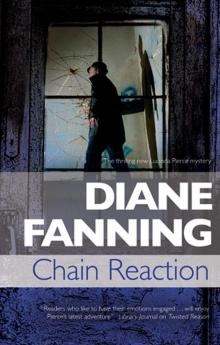 Chain Reaction
Chain Reaction Baby Be Mine
Baby Be Mine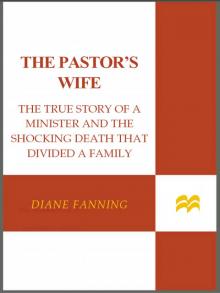 The Pastor's Wife
The Pastor's Wife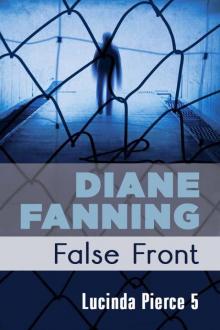 False Front (Lucinda Pierce)
False Front (Lucinda Pierce)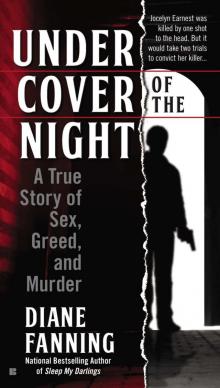 Under Cover of the Night
Under Cover of the Night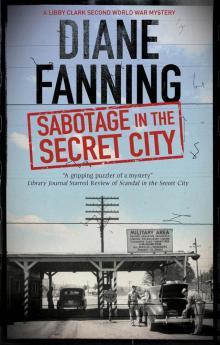 Sabotage in the Secret City
Sabotage in the Secret City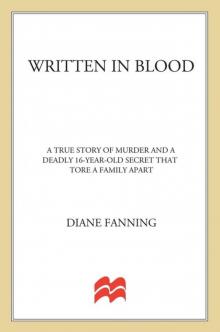 Written in Blood
Written in Blood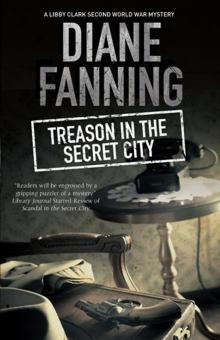 Treason in the Secret City
Treason in the Secret City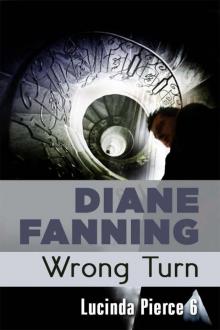 Wrong Turn
Wrong Turn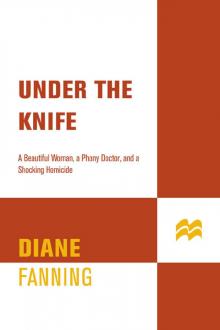 Under the Knife
Under the Knife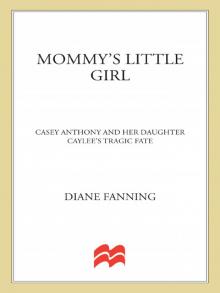 Mommy's Little Girl
Mommy's Little Girl Scandal in the Secret City
Scandal in the Secret City